Provenance Research
The Badisches Landesmuseum is a cultural-historical museum that collects and preserves various hand-crafted objects from prehistory to the present day.
The museum has been conducting proactive provenance research since 2010. Dr Katharina Siefert (Department of Art and Cultural History) examines objects that were created before 1945 and acquired by the Badisches Landesmuseum after 1933. It is important to check whether these were illegally seized during the Nazi regime.
The research of Dr Siefert it has made clear that provenance research is not a quickly solvable task but rather a progressive process that can take a long time. Ideally, an “open” provenance status will become an “unobjectionable” one.
In 2015, Dr Katharina Siefert at the Badisches Landesmuseum made this research centre permanent, thus ensuring the continuity of personnel.
Your contact
Referat Kunst- und Kulturgeschichte, Kuratorin Renaissance 1500-1700; Provenienzforschung
Send an e-mailCarpenters’ guild sign of Siegfried Lämmle
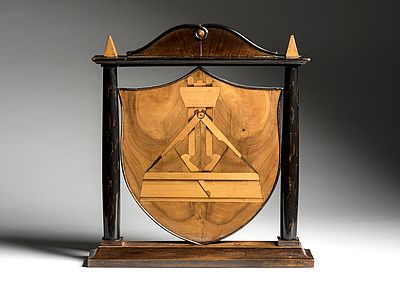
On 6 May 2019, the Badisches Landesmuseum announced the restitution of a carpenters’ guild sign from the property of the prominent art dealer Siegfried Lämmle from Munich to his descendants in the US.
The Badisches Landesmuseum acquired the guild sign in June 1942 at the auction of the art dealer Gebrüder Albrecht in Baden-Baden. The origin of the object was clarified through proactive provenance research. During intensive research, Dr Katharina Siefert, provenance researcher at the Badisches Landesmuseum, came across the object in an auction catalogue from Adolf Weinmüller in Munich. Thus she was able to identify Siegfried Lämmle as the consignor and owner and clearly identify the guild sign. Lämmle was of Jewish origin and was forced to sell the item below its value because of the prohibition of the profession. A “list of dubious purchases from 1938–1945” handed over by the Museum to the Allied Military Government in Karlsruhe in October 1945 also confirms that the museum was once aware that the object was seized because of Nazi persecution. These interrelationships were proven by the research work.
The descendants of Siegfried Lämmle have decided as legal owners to offer the wooden sign to the Badisches Landesmuseum. The museum has now legally acquired the item so that it will remain permanently in the museum’s possession.
Sigmann-Seidel numismatic collection
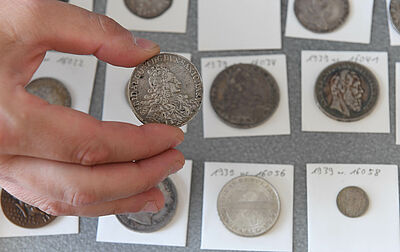
In the Badisches Landesmuseum a total of 25 coins and medals were identified as have been illegally seized during the Nazi era. They were discovered through proactive research. The museum informed the legal owner, who lives in the US, about the find and offered the objects for restitution. The granddaughter who is entitled to inherit decided to accept the collection “in kind”. The coins were handed over to her son on 23 June 2017 on behalf of his mother, the rightful owner.
The Sigmann-Seidel collection originally comprised 54 coins and medals. In 1939, the former owner Clara Sigmann had to donate these coins to the numismatic collection of the Badisches Landesmuseum via the Mannheim Customs Office. Because of her Jewish origin, Clara Sigmann was persecuted by the Nazi regime and robbed of her assets. She moved to her daughter in Mannheim, where she stayed until March 1939. Clara Sigmann (now Seidel) finally managed to escape to the US via Buenos Aires. In 1956, 22 objects were returned to Clara Seidel as part of the restitution proceedings. She also received damages for the remaining objects that could not be found at the time. It was finally possible to return the remaining coins and medals found in the Badisches Landesmuseum.
Lady in the theatre box
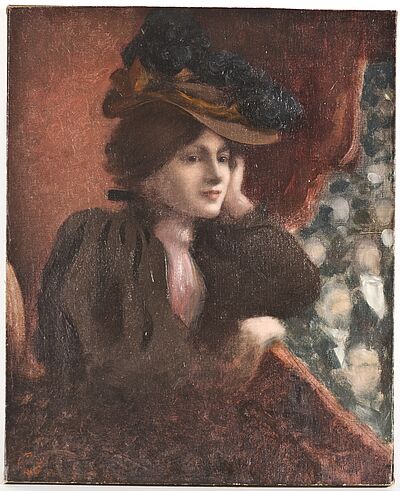
During investigations, Dr Katharina Siefert came across looted art from former private Mannheim possessions. For over 70 years, the six paintings and a late Gothic sculpture have been stored in a depot of the Badisches Landesmuseum. During her research at the General State Archive in Karlsruhe, the scientist discovered a list of objects from “non-Aryan possession”. Because these were predominantly unspecific landscapes and male portraits, the classification proved to be extremely difficult. Only with the striking painting “Dame in Theaterloge” [Lady in the theatre box] was it possible to identify the works as looted art.
With a receipt from 1943, this trail led to the Badisches Landesmuseum. The former director of the Karlsruhe Art Gallery, Dr Kurt Martin, confirmed the receipt of the art objects taken from Jewish property. As an expert of the “Reich Ministry of Education for Art and Museum Assets” in Baden, Martin, together with the “Liquidation office for stranded assets” in Mannheim, also examined art objects from Jewish property that had been confiscated in “lifts” prior to export. He decided on the museum value of objects, which then either ended up on the art market or – as in this case – were transferred to the museum.
The evidence is clear: the paintings and the sculpture originate from the confiscation of the property of Jewish citizens from Mannheim, which had been returned from Amsterdam or Rotterdam to Mannheim. Because the owners are still unknown, this looted art has been added to the LostArt database.
Holzer timepiece collection
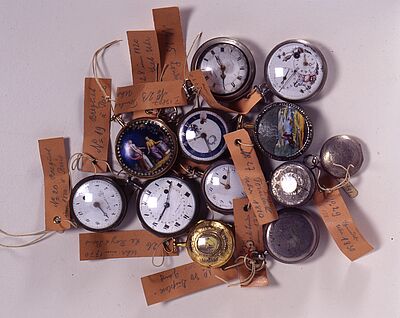
Moritz Holzer (born 1871) lived with his wife Hermine and their two sons in Pforzheim until 1940. Moritz Holzer owned a chain and ring factory in the jewellery town.
Before the deportation of the family to Gurs on 22 October 1940, the assets were “utilised”. The “seized” collection of 124 pocket watches from various international manufacturers was transferred to the Badisches Landesmuseum on 21 March 1941 by the “Administration and Utilisation of Jewish Property in Baden” for examination. There, the watches were appraised by an external expert, and 37 pieces were purchased by the Badisches Landesmuseum as a “very valuable addition and enrichment to the collection”. They were entered in the inventory book with the note “Police directorate, Department of Jewish property, Pforzheim". Today they are exhibited as “looted property” in the Baden and Europe collection department in the area on National Socialism. The remaining 87 timepieces were bought by the Karlsruhe master watchmaker and collector Oskar Hiller.
After deportation and imprisonment, Moritz and Hermine Holzer managed to migrate to Birmingham in 1945. Their son Richard, who had previously fled to Switzerland, also lived there. In 1978 in Yad Vashem, he testified to the death of his brother Erich, who had been deported to Auschwitz on 16 September 1942.
Moritz Holzer filed an application for restitution. In 1955, this was settled in favour of the applicant in the form of a compensation payment for the confiscated household effects, including the timepiece collection.
Madonna on the throne
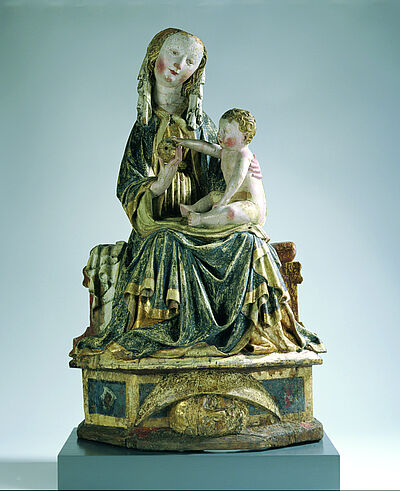
The first result of the provenance research started in 2010 at the Badisches Landesmuseum: Art historian Dr Katharina Siefert was able to prove that the Gothic sculpture “Throne of Mary with Child” (Inv. No. 62/108) once belonged to the Jewish art dealer Siegfried Lämmle from Munich. His collection was confiscated by the National Socialists in 1938 and taken over and inventoried by the Bavarian National Museum.
It was not until 1950 that the sculptures were returned to Siegfried Lämmle, who had migrated to the US. After Lämmle’s death, the objects in the collection were sold by his heirs. In 1955, the Swiss industrialist and art collector Emil G. Bührle bought the sculpture. In 1962, the Bührle Foundation finally divested a number of objects. In the same year, the Badisches Landesmuseum acquired – legally, as it now turns out – the “Throne of Mary with Child”, which is now in the collection exhibits on the Late Middle Ages.